
历史背景
拉韦林的“Op den Zoom”是荷兰卑尔根市Op Zoom的一个防御工事遗址,由著名的堡垒设计师门诺•范•科霍恩(Menno van Coehoorn)在18世纪初建造,这是他现存的唯一的堡垒。该要塞最初只能乘船到达,必须在水面上划80米的船才能到达要塞。19世纪末,这座堡垒失去了防御功能,原来的入口仍在水线以上。在1930年又建了一座木桥,如今此地主要用于小型公共和私人活动。
Short History
The Ravelijn "Op den Zoom" is a fortress-island of the city of Bergen op Zoom in The Netherlands which is made in the beginning of the 18th century by Menno van Coehoorn, a famous fortress builder. This is the only "ravelijn" of him still present. The fortress was originally only accessible by boat , so supplies and soldiers had to be rowed the 80 meters to the fortress. The original entrance is still present just above the waterline At the end of the 19th century the fortress lost its defensive function. In 1930 a raised wooden bridge was added. Nowadays the island-fortress is mainly used for small public and private events.
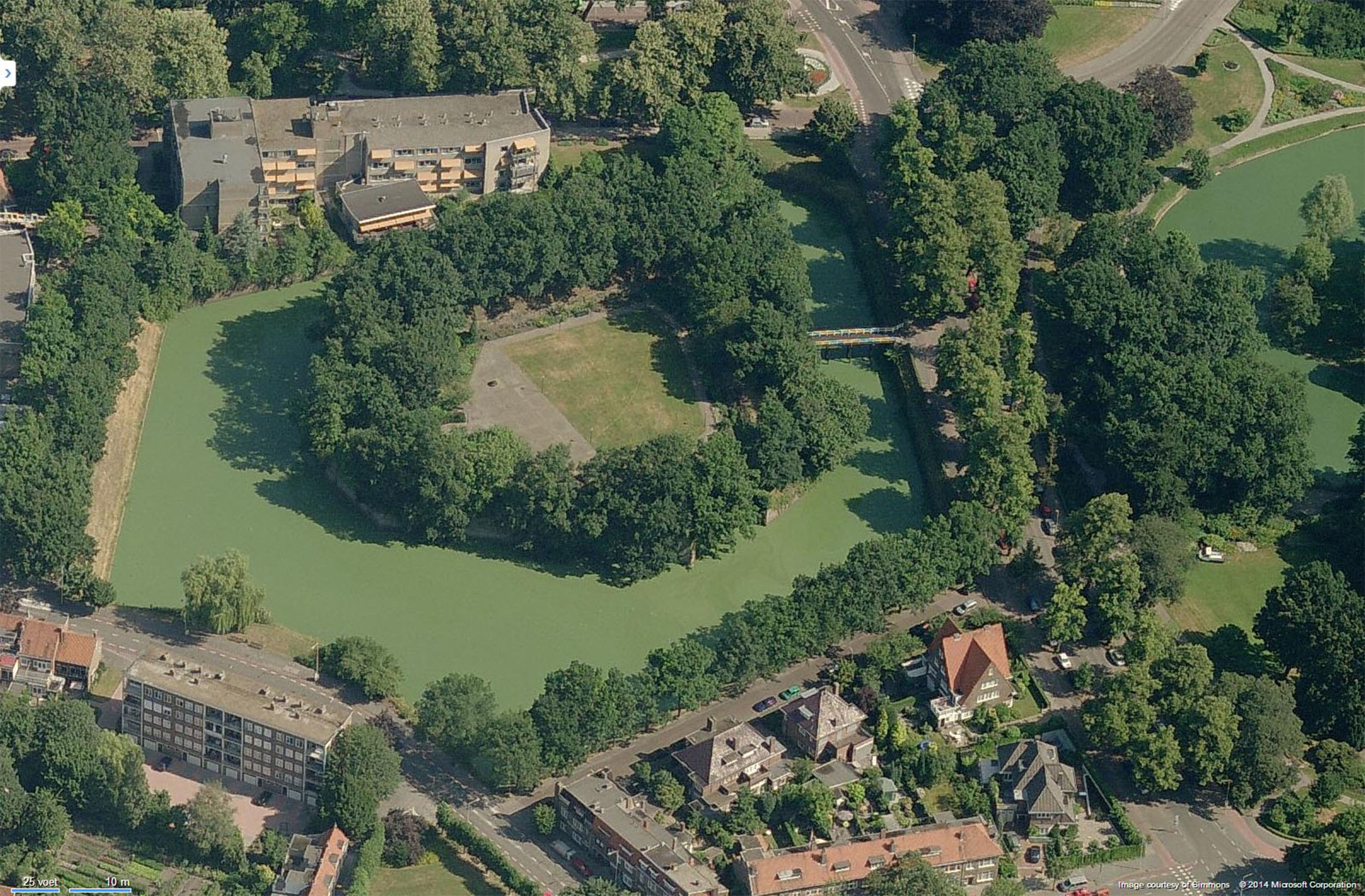
项目目标
项目的任务是建造第二座人行天桥,原因有二:一是将堡垒与市中心连接起来,二是在紧急情况下,堡垒需要第二条逃生路线。
The assignment
The assignment was to make a second pedestrian bridge for two reasons. First to connect the fortress to the city centre, second to make a second escape route from the fortress in case of emergencies.
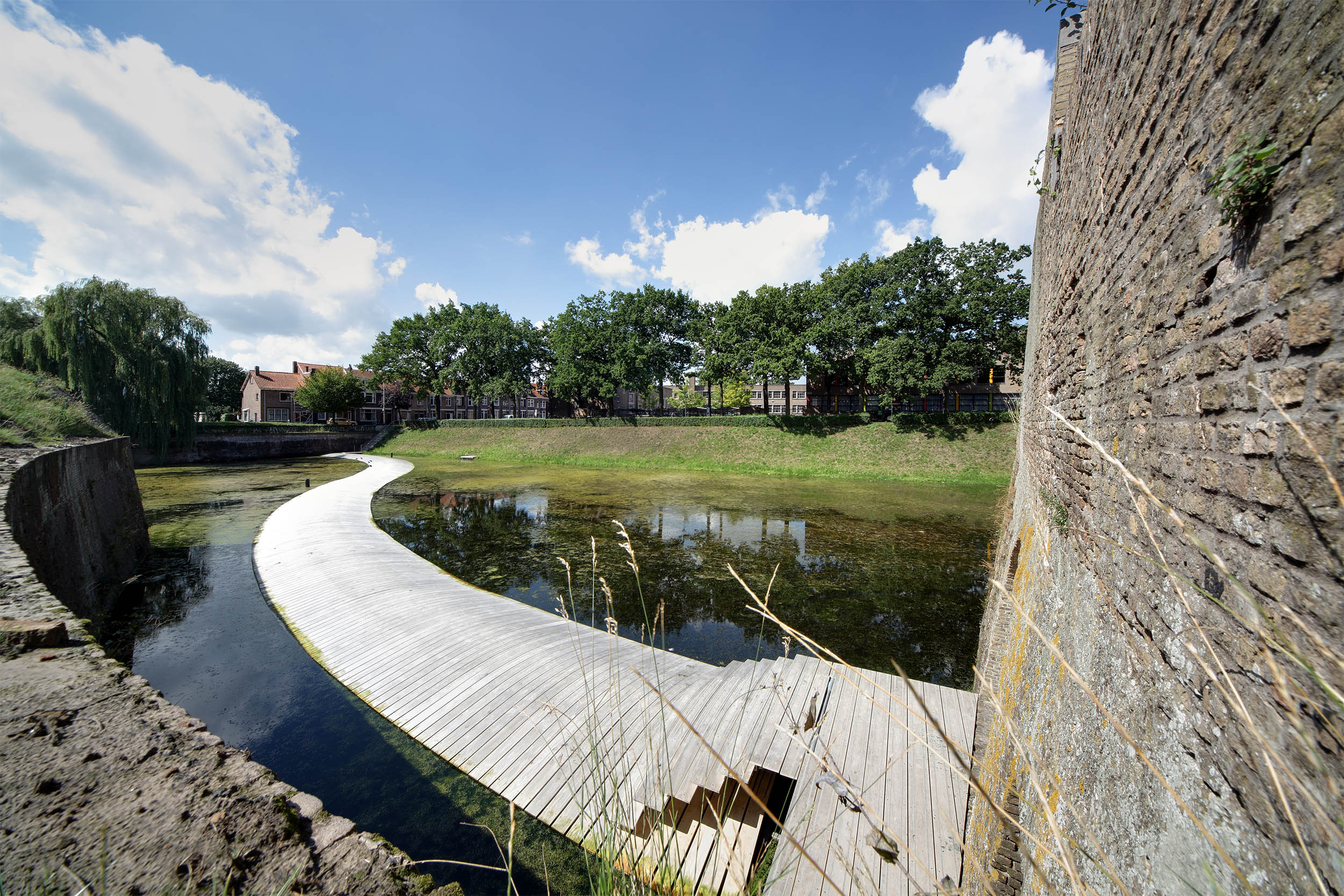

概念
从前,堡垒的给养是由一艘艘小船供给的,因此我们设计的这座桥的概念,是让桥沿着这些船原来的路线走,这样桥就呼应了历史上的小艇的路线,这与是为什么这座桥在水面上蜿蜒的形状。我们还有意让桥漂浮起来,这样做的另一个好处是,在冬天桥可以被拉到一边,这样游客就可以在堡垒周围滑冰了。桥的桥面是凸形的,让桥与水和周围环境融为一体,桥在水中没有倒影,尽可能靠近水面,堡垒附近的防波堤的楼梯可以随着水位上下移动并保持水平。
Concept
In former days, the Ravelijn was supplied from the city with small rowing boats. The concept of the bridge is, to let the bridge follow the original track of these boats, so the bridge echoes the former route the boats followed from the city to the fortress. That is why the bridge snakes across the water to the fortress. Therefore we also made the bridge floating. An additional advantage of that is , that in winter the bridge can be pulled to the side, so there can be ice-skated around the fortress. The deck of the bridge is convex to let the bridge blend in with the water and the surroundings. No mirror image in the water and as close to the water as possible. The stairs at the jetty near the fortress can move up and down (and stay horizontal) with the water level.
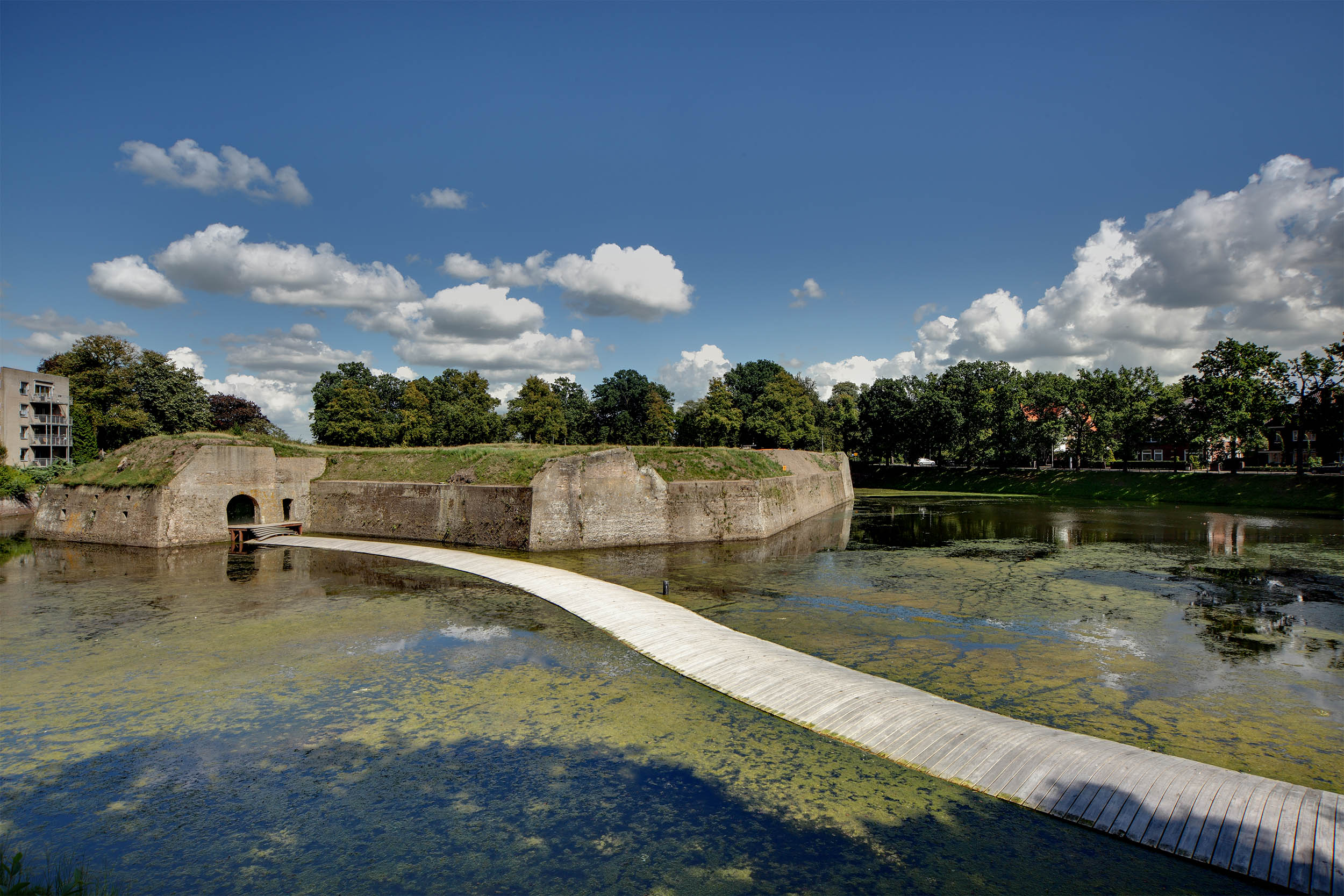
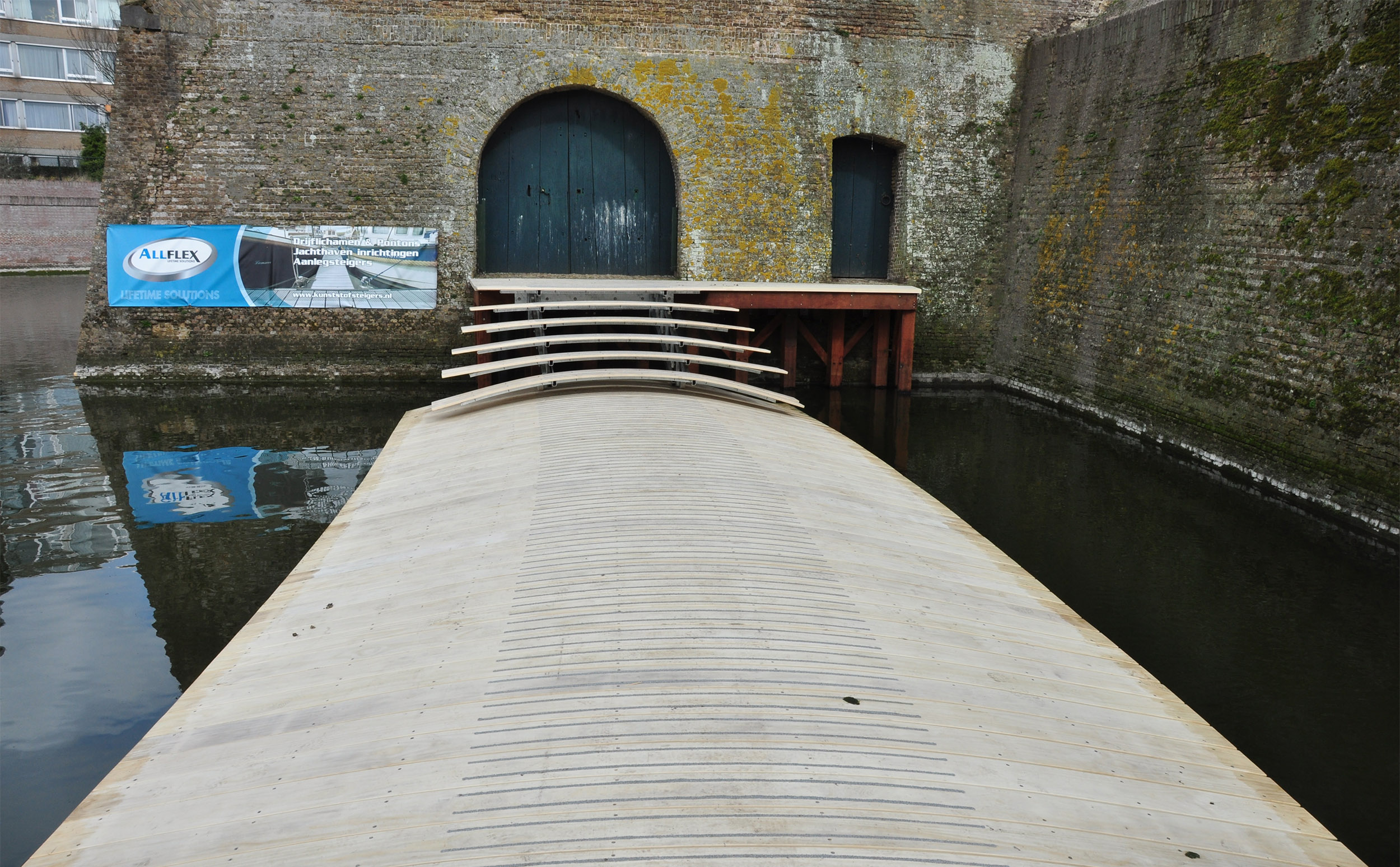
材料
这座桥完全符合“重塑制造方式”的原则。充气聚乙烯管道位于木材表面下,有助于保持桥梁的漂浮,不需要任何额外的结构框架。地板是由Accoya木材制成的,这是一种高性能的木材产品,经过处理以提高其抵抗真菌腐蚀的能力,以及由于接近水而导致的膨胀和收缩的效果。在未来,这座桥可以很容易地拆卸和回收。
Material
The bridge is made completely to the principles of the Cradle to Cradle philosophy. Air-filled polyethylene pipes positioned underneath the timber surface help keep the bridge afloat, without requiring any additional structural framework. The decking is made of Accoya, a high-performance wood product, which is treated to improve its ability to resist fungal decay, and the effect of swelling and shrinkage that could result from its proximity to water. In the future the bridge can be easily disassembled and recycled.
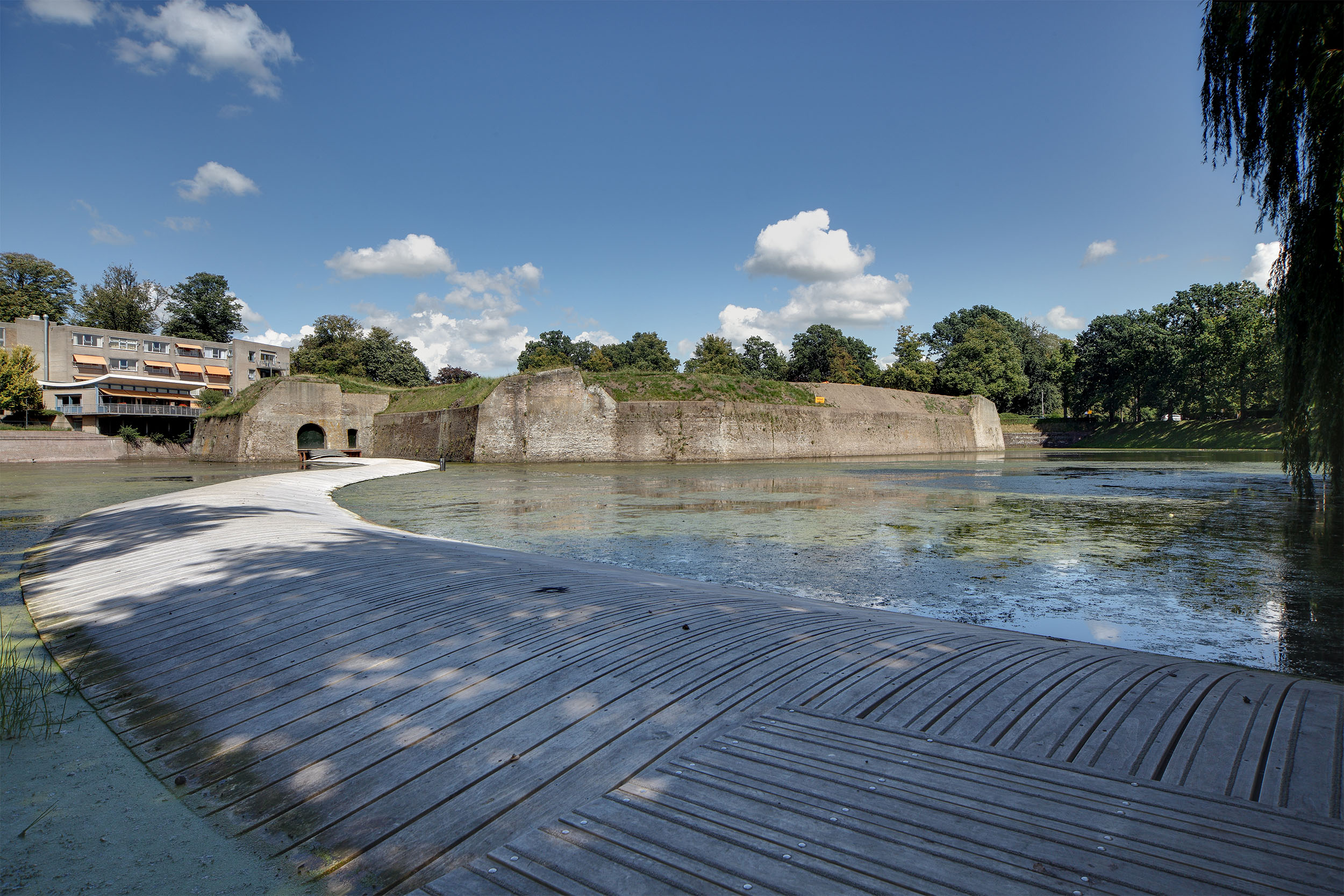
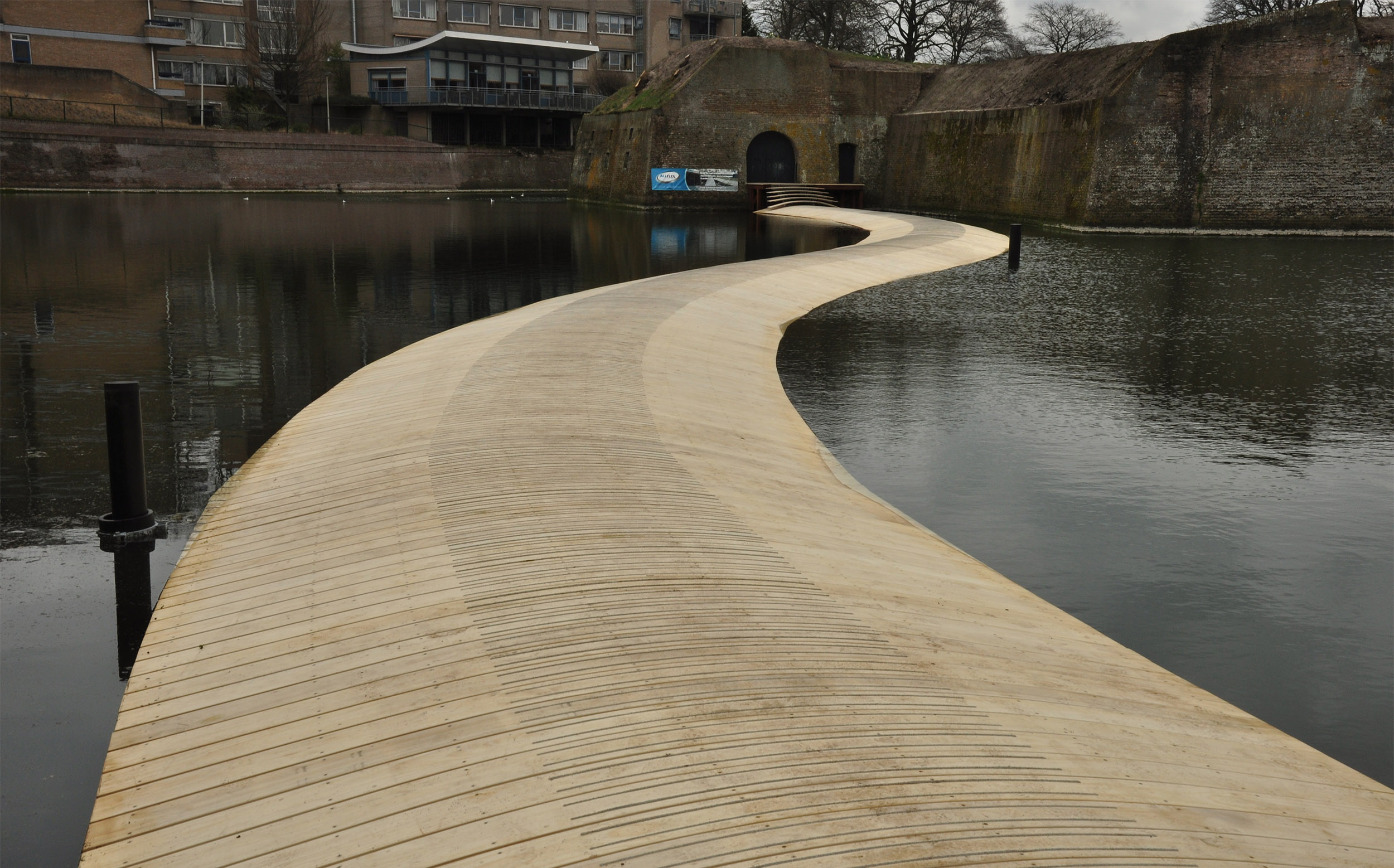
▼手绘平面
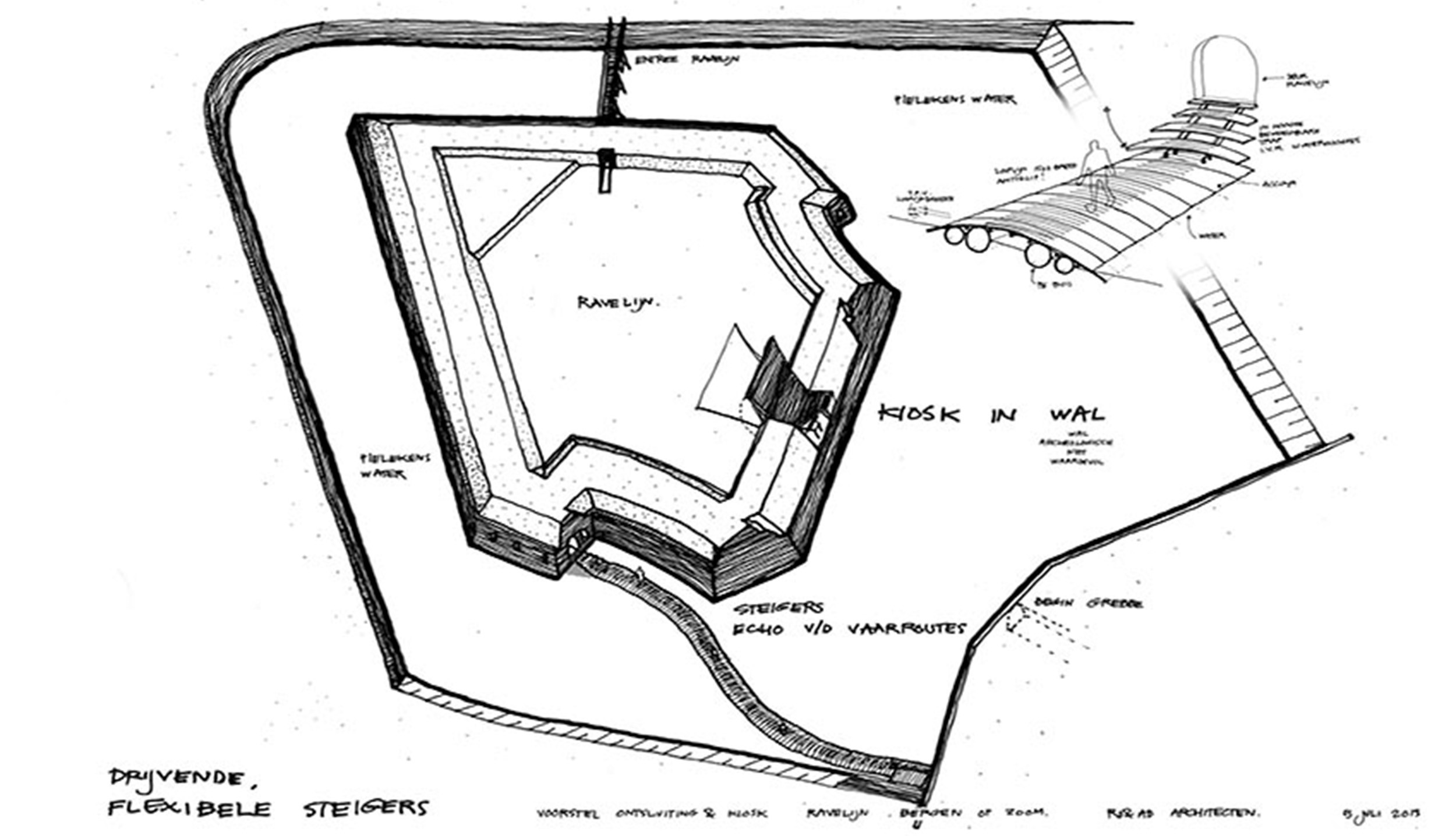
▼平面图
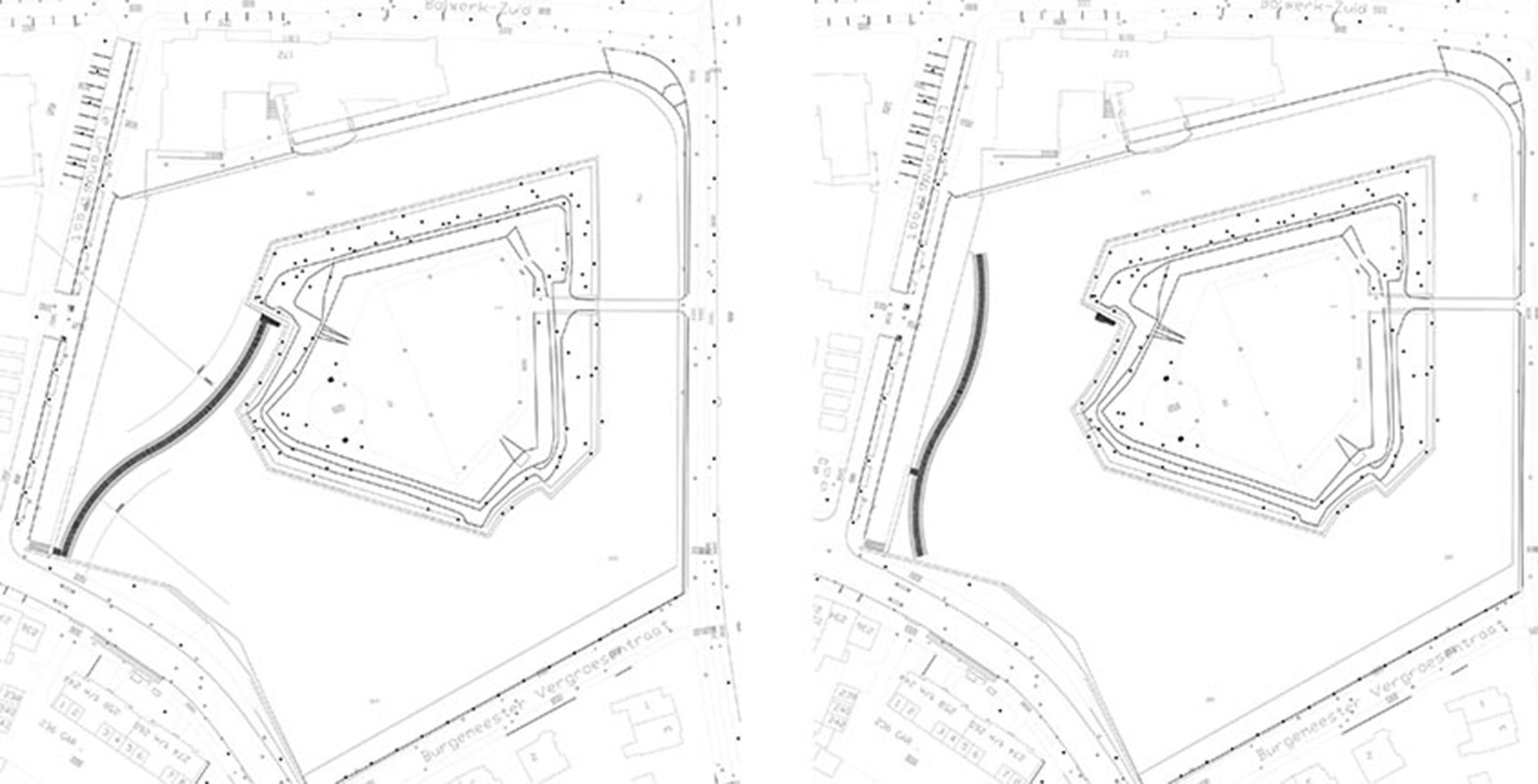
设计单位:RO&AD Architecten, Bergen op Zoom, Middelburg, The Netherlands
设计团队:Ro Koster、Ad Kil、Martin van Overveld
结构工程师:W2N Engineers, Drachten, The Netherlands
承包商:Allflex, Halsteren, The Netherlands
施工时间:3 months, finished March 2014
总长:80米
功能:人行桥
Architect: RO&AD Architecten, Bergen op Zoom, Middelburg, The Netherlands
Design team: Ro Koster, Ad Kil, Martin van Overveld
Commisioner, City Council of Bergen op Zoom
Structural Engineer: W2N Engineers, Drachten, The Netherlands
Contractor: Allflex, Halsteren, The Netherlands
construction time: 3 months, finished March 2014
Total length: 80 meters
Function: Pedestrian bridge